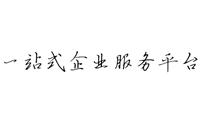人教版八上Unit7知识归纳一)习习用语:take off 脱下put on 穿上cut up 切碎turn on 打开 turn off 关掉turn down/ up把声音调小/大mix up混淆在一起put…away 把…收起来put off 推迟,延期take away拿走a slice of bread 一片面包two teaspoons of honey 两汤匙蜂蜜two cups of yogurt 两杯酸奶a kilo of tomatoes 一公斤西红柿a piece of information/ paper/ news/ musicadd…to…把…加到…上pour…into… 倒…到…里put…in(into)…放…在(到)…里on the top 在顶部finally=at last 最后2 teaspoons of relish两茶匙调味品put…on...把……放到……上二)重点句型:1.Turn on the blender.打开果汁搅拌机。2.Cut up the bananas.切开香蕉。3.Pour the milk into the blender.将牛奶倒入果汁机里。
4.Put some relish on a slice of bread.将调味品涂到一片面包上。5.Put the bananas and yogurt into the blender.将香蕉和酸奶倒人果汁机。
6.How do you make a banana milk shake?你如何做香蕉奶昔?7.First, put 1 teaspoon of mayonnaise on the sandwich.首先,在三明治上放一茶匙蛋黄酱。三)外交用语:How do you make a banana milk shake?First,peel the bananas and cut them up.Then put the milk into the blender…How many bananas do we need? We need three bananas.语法聚焦:一.可数名词与不行数名词的用法(一)名词凭据其可数性可分为可数名词和不行数名词。
可数名词即指可以分为个体,且可直接用数目举行计数的名词,如 desk(课桌),girl(女孩),room(房间),school(学校)等;不行数名词即指不行数分为个体,且不行直接用数目举行计数的名词,如 milk(牛奶),imformation(消息),money(钱)等。(二)单数可数名词表现泛指时,前面要用不定冠词a(an),表现特指时,前面要用定冠词the; 而不行数名词前不能用a(an)修饰,表现特指时,前面一定要用定冠词the。
如:He is a factory worker. 他是一名工人。No one can see air. 没有人能瞥见空气。(三)可数名词表现复数意义时可用many,few,a few等词修饰。
如:many apples,a lot of tomatoes,a few pens不行数名词则要用much、a little等词修饰。如:much meat,a little bread,little water可数名词和不行数名词前都可以用some, any, a lot of, lots of 等来修饰,表现"一些,许多"。
如:There are some oranges on the desk. 桌子上有一些桔子。There is a lot of water in the bottle. 瓶里有许多水。(四)可数名词前可用详细的数词来表现详细的数量。
如:two apples, four books等。不行数名词前通常用"单元词+of"来表现数量。
如:a piece of paper, three pieces of paper等。(五)可数名词作主语时,谓语动词的单复数与主语的单复数保持一致。
如:This picture is very beautiful. 这幅画很美。不行数名词作主语时,谓语动词要用单数形式,可是不行数名词前有复数"单元词"时,谓语动词要用复数形式。如:There are two cups of tea on the table. 桌上有两杯茶。
(六)对可数名词前的修饰语提问用how many; 对不行数名词前的修饰语提问用how much。如:How many apples are there in the box?盒子里有几多个苹果?How much tea is there in the cup?杯里有几多茶水?注意:对不行数名词前的"单元词"的修饰语提问时,疑问词用how many。如:How many pieces of bread are there on the plate?盘子里有几多片面包?【辨析】 有的名词既可用作可数名词,也可用作不行数名词,只是寄义差别:①room 表现"房间"时,为可数名词,但表现"空间"、"余地"时,为不行数名词。②A:Would you like a cake? 要吃块蛋糕吗?B:No, I don't like cake. 不吃,我不喜欢吃蛋糕。
以上第一句用 a cake,这是把 cake 视为一块一块的"蛋糕",所以它是可数的;而第二句只用 cake,这是把它看成物质名词看待, 所以它成了不行数名词。③又如,tea(茶)作为物质名词,它是不行数的,但它若表现"一份茶"或"一种茶",则是可数的,如可说It's a good tea(那是一种好茶),Two teas, please(请来两份茶)。④像fish,turkey,chicken,duck等指动物时是可数名词,指"……肉"时是不行数名词。
⑤hair指一小我私家头上的全部头发时,是不行数名词;如果指某一根头发时,就是可数的。例如:Her hair is black.Whenever she finds a white hair ,she pulls it out.她的头发是黑的。她只要发现一根鹤发就将它拔掉。
【附录】可数名词单数变复数的规则(一)一般规则变化情况 :一般情况下加-s1.清辅音后读/s/;2.浊辅音和元音后读 /z/;map-maps bag-bags car-cars以s,x,sh,ch,末端的词加 -es读 /iz/bus-buses watch-watches以ce,se,ze,(d)ge等末端的词加 -s读 /iz/license-licenses以辅音字母+y末端的词变y 为i再加es读 /z/baby---babies(二)部门规则变化情况:1) 以y末端的专有名词,或元音字母+y 末端的名词变复数时,直接加s变复数: 如: two Marys the Henrysmonkey——monkeys holiday——holidays比力:层楼:storey ——storeys story——stories2) 以o 末端的名词,变复数时:a)加s,如: photo——photos piano——pianosradio——radios zoo——zoos;b)加es,如:potato——potatoes tomato——tomatoesc)均可,如:zero——zeros / zeroes(这类的特殊词变化需要强化影象。)3) 以f或fe 末端的名词变复数时:a) 加s,如: belief——beliefs(信念) roof——roofs(屋顶)b)去f,fe 加ves,如:half——halvesknife——knives leaf——leaves wolf——wolveswife——wives life——lives thief——thieves;c)均可,如: handkerchief(手帕): handkerchiefs / handkerchievesscarf(围巾): scarfs/scarves(三)名词复数的不规则变化:1)child——children foot——feet tooth——teethmouse——mice man——men woman——women注意:与 man 和 woman组成的合成词,其复数形式也是 -men 和-women.如: an Englishman,two Englishmen. 但German不是合成词,故复数形式为Germans; Bowman是姓,其复数是the Bowmans.man和woman作定语变复数时,它们也酿成复数。
例如:two women teachers2)单复同形 如:deer,sheep,fish,Chinese,Japaneseli,jin,yuan,two li,three mu,four jin但除人民币元、角、特别,美元、英镑等都有复数形式。如:a dollar, two dollars; a meter, two meters3)团体名词,以单数形式泛起,但视为复数。
如: people,police等自己就是复数,不能说 a people,a police,但可以说 a person,a policeman, the English,the British,the French,the Chinese,the Japanese,the Swiss 等名词,表现国民总称时,作复数用。如: The Chinese are industries and brave. 中国人民是勤劳勇敢的。4)以s末端,仍为单数的名词,如:a. maths,politics,physics等学科名词,为不行数名词,是单数。
b. news 是不行数名词。c. the United States,the United Nations 应视为单数。The United Nations was organized in 1945. 团结国是1945年组建起来的。
d. 以复数形式泛起的书名,剧名,报纸,杂志名,也可视为单数。"The Arabian Nights" is a very interesting story-book.<<一千零一夜>>是一本很是有趣的故事书。5)表现由两部门组成的工具,如:glasses, trousers,clothes, pants,scissors(铰剪),etc若表达详细数目,要借助数量词 pair(对,双);suit(套); a pair of glasses; two pairs of trousers6)另外另有一些名词,其复数形式有时可表现特别意思,如:goods货物,waters水域,fishes(种种)鱼,greens青菜,arms武器,works著作二、祈使句(一)祈使句表现请求、下令、嘱咐、邀请、劝告等。
祈使句分为:第二人称祈使句以及第—、三人称祈使句两大类。1.第二人称祈使句通常用来向听话者发出下令,提出要求或建议。这种祈使句的主语you通常不表现出来,而是以动词原形开头。如:Stand up! Don't worry about!但如果说话时有多人在场,就得把主语表现出来,或加呼语,以便指明是向谁提出请求或发出下令。
如:Parents with children, go the front! 带孩子的家长到前面去!Mary, clean the windows,and you boys ,wash the floor!玛丽擦窗户,你们男孩子洗地板!Come in,everybody! 每小我私家都进来!有时将主语表现出来是为了增强语气或表现"不兴奋"、"厌烦"、"藐视"等情绪。如:Don't you be late again! 你可别再迟到了!You get out of here! 你给我滚出去!Mind your own business,you! 你少管闲事!2.第一、三人称祈使句是以第一人称和第三人称代词或者名词等作为祈使的工具,这类祈使句通常以let为引导词表建议。如:Let's go! Let us go home!Let him be here by 10 o'clock.祈使句除用谓语动词表现外,还可用名词、副词、动词短语等表现。
如:Help! Patience! Quickly! Hands up!(二)祈使句的强调形式及否认形式:祈使句的强调形式是在整个结构之前加do。如:Do be careful!Do Stop talking!Do give my regards to your parents!务必/一定代我向你怙恃问好!祈使句的否认形式是在整个结构之前加don't或never。如:Don't you be nervous!你没关系张!以let为引导词的祈使句的否认形式通常是在Let's或Let us/me后加not。Let's not waste our time arguing about it! 咱们别浪费时间争论这事了!Let's not say anything about it! 这事咱们谁也别说!但英式英语也用这样的表达:Don't let's say anything about it.(三)祈使句的反意疑问句:1.祈使句的反意疑问部门为肯定形式,要用shall,will。
如:Pass me the book,will you?2.Let's表现第一人称的祈使句,反意疑问句为"Shall we?"。如:Let's go for a walk,shall we?Let's forget it,shall we?3.Let me和Let us 表现第二人称的祈使句,反意疑问句为"will you?"。如:Let us go for a walk,will you?4.其它行为动词引起的祈使句,无论其陈述部门是否认还是肯定的祈使句,多用"will you?",表一种客套的语气。如:Listen to me,will you?Don't tell anyone about it,will you?但在肯定的祈使句后有时也用"won't you?"表"提醒对方注意"或表"邀请"。
如:Have a cup of coffee,won't you?Come in and take a seat,won't you/will you?(四)祈使句用于两个重要句型中:1."祈使句+and+表效果的陈述句"用来叙述肯定的条件。2."祈使句+or(else)+表效果的陈述句"用来叙述否认的条件,or(else)表现"否则;要否则"。试比力:Hurry up, and you'll catch the train.(=If you hurry up,you'll catch the train.)Hurry up,or you'll miss the train.(=If you don't hurry up,you'll miss the train.)(五)祈使句由直接引语酿成间接引语:当祈使句由直接引语酿成间接引语时,其常用结构为"ask/request/tell/order sb(not)to do sth"。如:"Speak loudly,please!" the teacher said to me.(=The teacher asked me to speak loudly.)"Don't smoke in the meeting room!" he said to Tom.(=He told Tom not to smoke in the meeting room.)典例剖析:1. ——Need I go home now? —— _______________ .A.Yes,you need. B.Yes,you must.C.No.you mustn′t. D.No,you may not. (柳州中考)【剖析】 本题考察情态动词need的用法。
Need通常用于否认句和疑问句中。在回覆以need开头的疑问句时,肯定回覆用"Yes,主语+must.",否认回覆用"No,主语+needn't".所以本题谜底选B.2.——I think drinking milk is good _______ our health.——Yes,I agree _______ you.A.for,with B.to,to C.with,to D.at,with (荆门中考)【剖析】 本题考察牢固用法。
be good for意为"有益于……";agree with sb.意为"同意某人(的意见)"。故本题谜底选A.3.People in America eat much ________ .A.coffee B.onions C.beef D.iced-water (石家庄中考)【剖析】 本题考察可数名词与不行数名词的用法。凭据动词eat,可清除A、D;而much只修饰不行数名词,可清除B.故本题谜底选C.4._________ police are standing at the corner?A.How far B.How many C.How much D.How long【剖析】 本题考察疑问词的用法。
Police是团体名词,总是复数形式,询问复数名词数量的几多用how many.故本题谜底选B.。
本文关键词:博鱼APP官方网站,博鱼手机版APP
本文来源:博鱼APP官方网站-www.xjxrck.com







